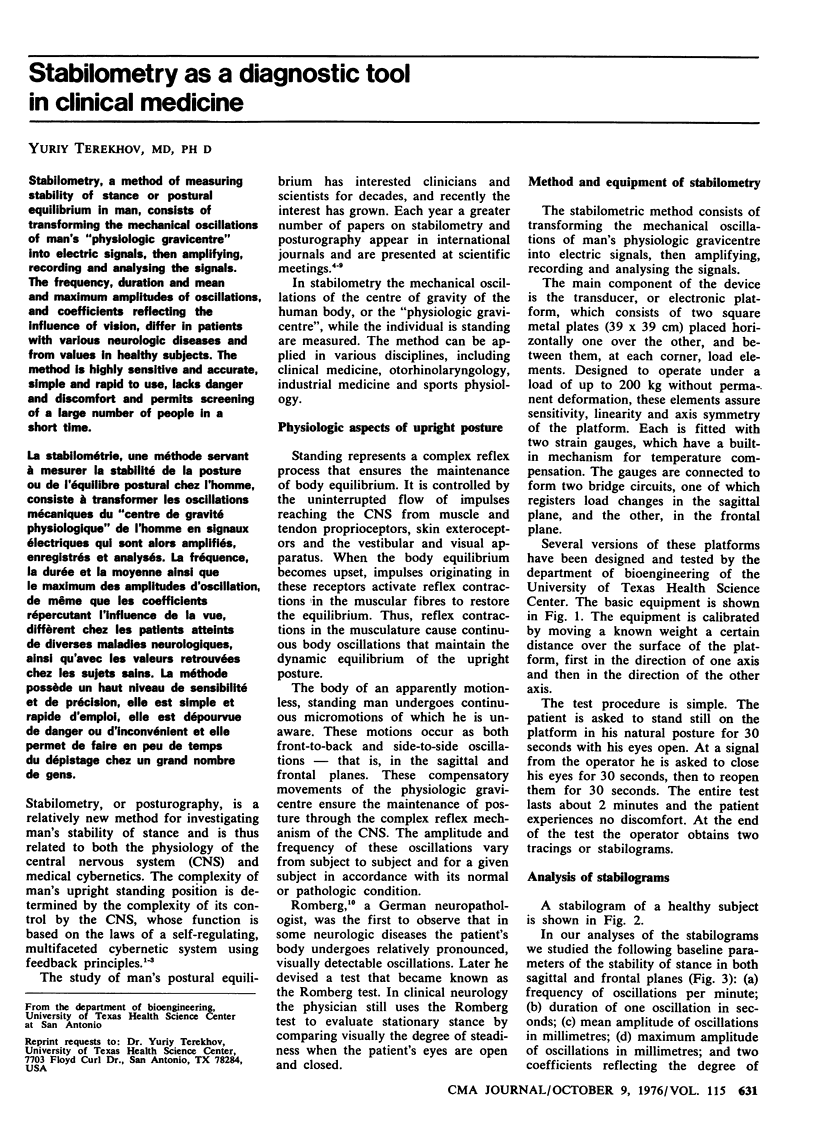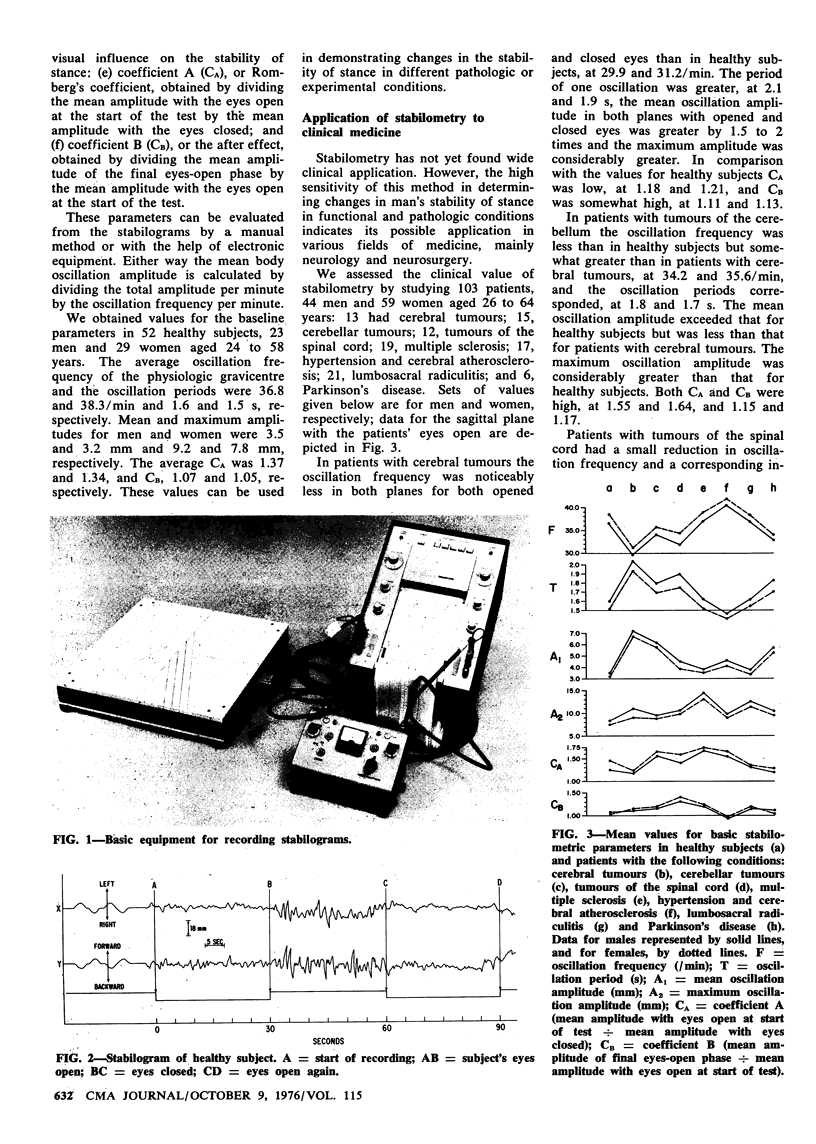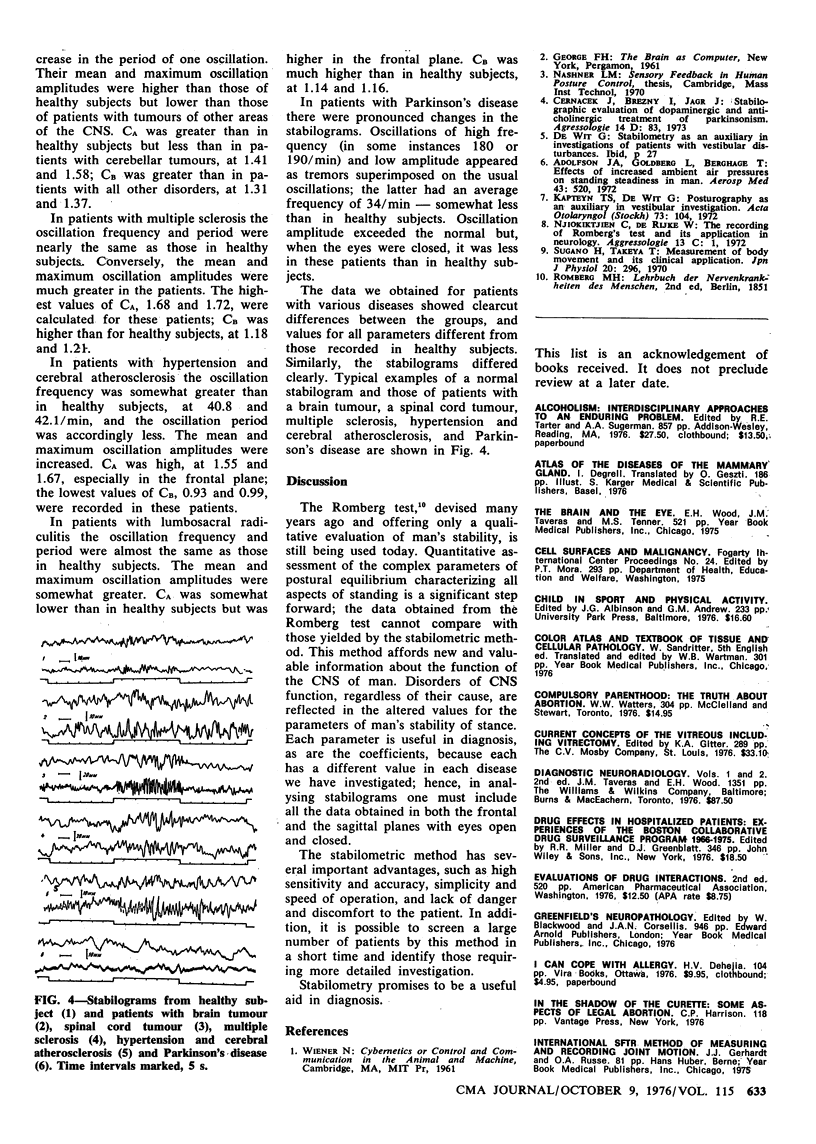Abstract
Stabilomety, a method of measuring stability of stance or postural equilibrium in man, consists of transforming the mechanical oscillations of man's "physiologic gravicentre" into electric signals, then amplifying, recording and analysing the signals. The frequency, duration and mean and maximum amplitudes of oscillations, and coefficients reflecting the influence of vision, differ in patients with various neurologic diseases and from values in healthy subjects. The method is highly sensitive and accurate, simple and rapid to use, lacks danger and discomfort and permits screening of a large number of people in a short time.
Full text
PDF


Images in this article
Selected References
These references are in PubMed. This may not be the complete list of references from this article.
- Adolfson J. A., Goldberg L., Berghage T. Effects of increased ambient air pressures on standing steadiness in man. Aerosp Med. 1972 May;43(5):520–524. [PubMed] [Google Scholar]
- Kapteyn T. S., de Wit G. Posturography as an auxiliary in vestibular investigation. Acta Otolaryngol. 1972 Feb-Mar;73(2):104–111. doi: 10.3109/00016487209138918. [DOI] [PubMed] [Google Scholar]
- Sugano H., Takeya T. Measurement of body movement and its clinical application. Jpn J Physiol. 1970 Jun 15;20(3):296–308. doi: 10.2170/jjphysiol.20.296. [DOI] [PubMed] [Google Scholar]



